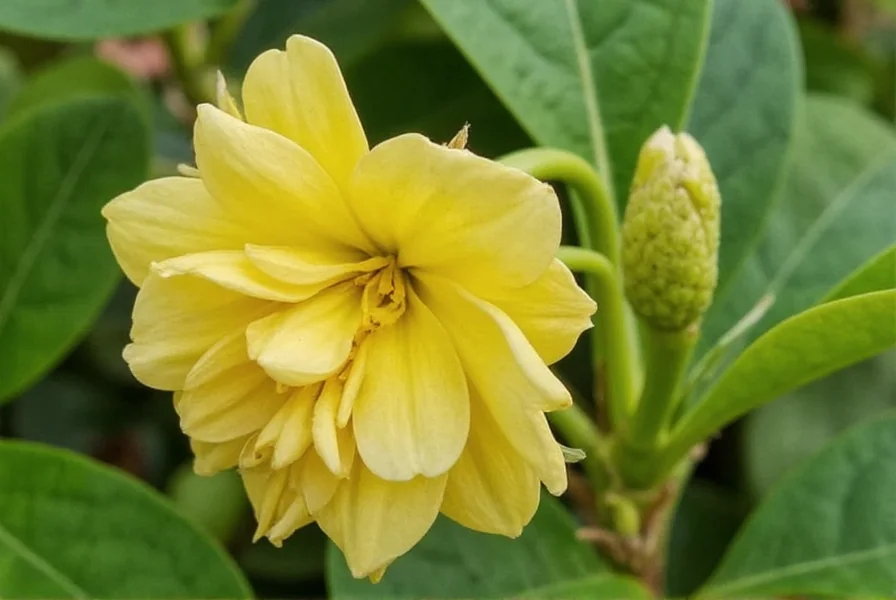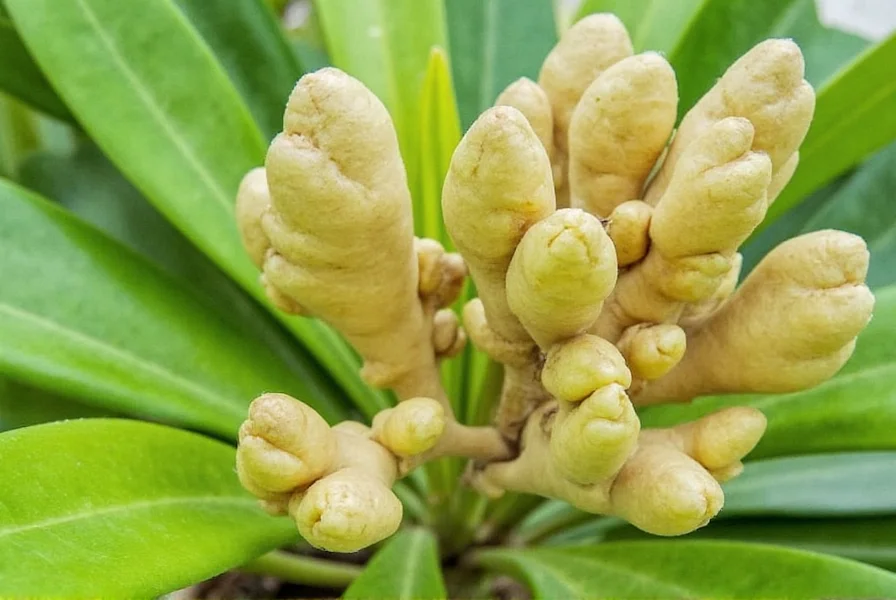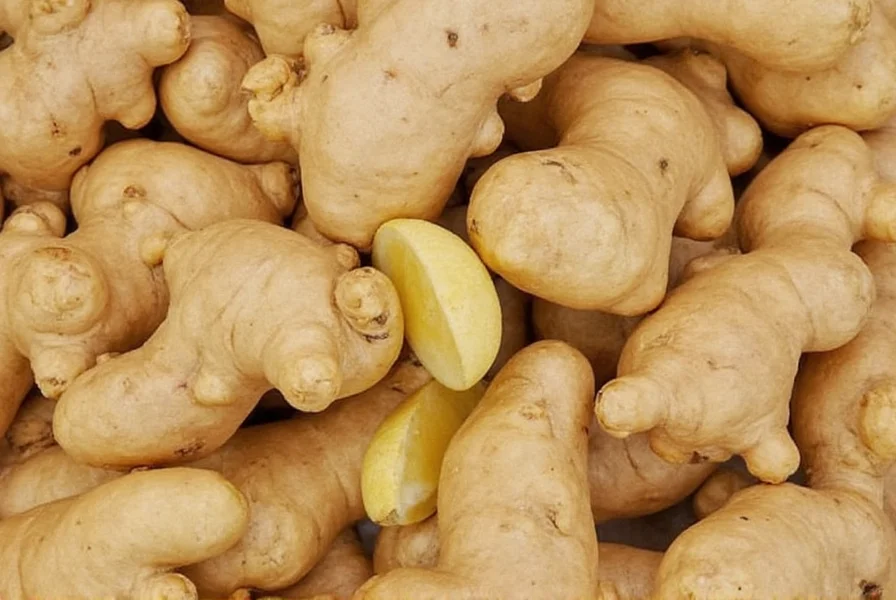Growing your own ginger at home is simpler than many gardeners realize, offering fresh, organic spice while adding an attractive tropical element to your garden or indoor space. This versatile perennial plant (Zingiber officinale) thrives in warm, humid conditions but can be cultivated successfully in various climates with proper care techniques.
Understanding Ginger Plant Biology
Ginger isn't actually a root but a rhizome—a horizontal underground stem that produces roots and shoots. This distinction matters for successful cultivation, as rhizomes require specific planting orientation and growing conditions. The plant grows to about 2-3 feet tall with narrow leaves and occasionally produces beautiful yellow-green flowers. Understanding this growth pattern helps optimize your how to grow ginger at home approach.
Selecting Quality Ginger Rhizomes
The foundation of successful ginger cultivation begins with selecting healthy rhizomes. Look for plump, firm pieces with multiple visible growth buds (the small, pointy "eyes" on the surface). Organic ginger from the grocery store works best, as conventional ginger often contains growth inhibitors. Alternatively, specialty gardening suppliers offer disease-free ginger varieties specifically for planting.

Optimal Planting Conditions
Ginger thrives in specific environmental conditions that mimic its native tropical habitat. The ideal soil for growing ginger is loose, rich in organic matter, and slightly acidic (pH 5.5-6.5). Create a perfect growing medium by mixing equal parts potting soil, compost, and perlite or sand for proper drainage.
| Growing Condition | Optimal Range | Notes |
|---|---|---|
| Temperature | 70-90°F (21-32°C) | Avoid temperatures below 50°F (10°C) |
| Light | Partial shade | 2-5 hours of morning sun ideal |
| Soil pH | 5.5-6.5 | Slightly acidic conditions preferred |
| Humidity | 70-80% | Mist regularly in dry climates |
Step-by-Step Planting Guide
Follow these detailed steps for successful ginger cultivation:
- Prepare the rhizomes: Cut your ginger root into 1-2 inch pieces, ensuring each has 2-3 growth buds. Let cut surfaces dry for 24-48 hours to prevent rot.
- Choose containers or garden beds: For growing ginger in containers, select pots at least 12 inches deep with excellent drainage. Garden beds should be raised and well-prepared with organic matter.
- Planting technique: Place rhizomes 2-4 inches deep with growth buds facing upward. Space pieces 8-10 inches apart in garden beds.
- Initial watering: Water thoroughly after planting, then maintain consistent moisture without waterlogging. Ginger prefers "moist but not soggy" conditions.
- Mulching: Apply 2-3 inches of organic mulch to retain moisture and regulate soil temperature.
Essential Care Requirements
Proper ongoing care determines your harvest success. During the growing season (spring through fall), maintain these practices:
- Watering: Keep soil consistently moist but never waterlogged. Water when the top inch of soil feels dry. Increase frequency during hot, dry periods.
- Fertilizing: Apply balanced organic fertilizer every 4-6 weeks. A 10-10-10 NPK ratio works well, or use compost tea for organic ginger cultivation methods.
- Shade management: Protect plants from harsh afternoon sun, especially in warmer climates. Consider planting near taller plants that provide dappled shade.
- Humidity: Mist plants regularly or use a humidity tray if growing ginger indoors, particularly in dry climates or during winter heating seasons.
Harvesting Your Ginger
Understanding when to harvest ginger is crucial for optimal flavor and yield. Ginger requires patience, as it typically needs 8-10 months to reach full maturity. However, you can practice "partial harvesting" after 4 months:
- Full harvest: When leaves yellow and die back (usually 8-10 months after planting), stop watering and carefully dig up entire rhizomes.
- Partial harvest: Gently dig beside the plant after 4 months to harvest small sections while allowing the plant to continue growing.
- Indoor overwintering: In colder climates, bring container-grown ginger indoors before first frost and reduce watering to let it go dormant.

Troubleshooting Common Growing Problems
Even with proper care, common problems growing ginger may occur. Address these issues promptly:
- Yellowing leaves: Usually indicates overwatering. Reduce watering frequency and ensure proper drainage.
- Rotting rhizomes: Caused by poor drainage or cold temperatures. Improve soil structure and protect from cold.
- Pests: Watch for aphids and spider mites, especially on indoor plants. Treat with insecticidal soap or neem oil.
- Slow growth: May indicate insufficient nutrients or light. Adjust fertilization and consider moving to a brighter location with indirect light.
Storage and Usage Tips
After harvesting, properly store your ginger to maximize shelf life:
- Clean rhizomes gently without washing thoroughly (excess moisture promotes mold)
- Store in a cool, dark place or in the refrigerator for up to 3 weeks
- For longer storage, freeze peeled ginger or preserve in vinegar
- Freshly harvested ginger has superior flavor compared to store-bought varieties
Adapting Ginger Cultivation to Different Climates
While ginger prefers tropical conditions, you can successfully grow it in various climates with these adaptations:
- Cold climates: Grow in containers that can be moved indoors before first frost. Use grow lights during winter months.
- Dry climates: Increase humidity around plants with regular misting and use moisture-retaining mulch. Consider growing in a greenhouse.
- Hot climates: Provide ample shade during hottest parts of the day and increase watering frequency while ensuring excellent drainage.











 浙公网安备
33010002000092号
浙公网安备
33010002000092号 浙B2-20120091-4
浙B2-20120091-4